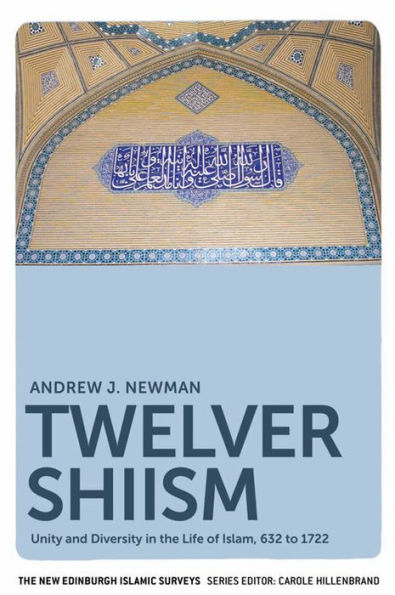Twelver Shiism: Unity and Diversity in the Life of Islam, 632 to 1722
Charts the history and development of Twelver Shi'ism
As many as 40 different Shi‘i groups existed in the 9th and 10th centuries; only 3 forms remain. Why is Twelver Shi‘ism one of them? As the established faith in modern Iran, the majority faith in Iraq and areas in the Gulf and with its adherents forming sizeable minorities elsewhere in the region, it is arguably the most successful branch of Shi'ism.
Andrew Newman charts the history Twelver Shi’ism, uncovering the development of the key distinctive doctrines and practices which ensured its survival in the face of repeated challenges. He argues that the key to the faith's endurance has been its ability to institutionalise responses to the changing, often localised circumstances in which the community has found itself, thereby remaining remarkably resilient in the face of both internal disagreements and external opposition.
1115398888
As many as 40 different Shi‘i groups existed in the 9th and 10th centuries; only 3 forms remain. Why is Twelver Shi‘ism one of them? As the established faith in modern Iran, the majority faith in Iraq and areas in the Gulf and with its adherents forming sizeable minorities elsewhere in the region, it is arguably the most successful branch of Shi'ism.
Andrew Newman charts the history Twelver Shi’ism, uncovering the development of the key distinctive doctrines and practices which ensured its survival in the face of repeated challenges. He argues that the key to the faith's endurance has been its ability to institutionalise responses to the changing, often localised circumstances in which the community has found itself, thereby remaining remarkably resilient in the face of both internal disagreements and external opposition.
Twelver Shiism: Unity and Diversity in the Life of Islam, 632 to 1722
Charts the history and development of Twelver Shi'ism
As many as 40 different Shi‘i groups existed in the 9th and 10th centuries; only 3 forms remain. Why is Twelver Shi‘ism one of them? As the established faith in modern Iran, the majority faith in Iraq and areas in the Gulf and with its adherents forming sizeable minorities elsewhere in the region, it is arguably the most successful branch of Shi'ism.
Andrew Newman charts the history Twelver Shi’ism, uncovering the development of the key distinctive doctrines and practices which ensured its survival in the face of repeated challenges. He argues that the key to the faith's endurance has been its ability to institutionalise responses to the changing, often localised circumstances in which the community has found itself, thereby remaining remarkably resilient in the face of both internal disagreements and external opposition.
As many as 40 different Shi‘i groups existed in the 9th and 10th centuries; only 3 forms remain. Why is Twelver Shi‘ism one of them? As the established faith in modern Iran, the majority faith in Iraq and areas in the Gulf and with its adherents forming sizeable minorities elsewhere in the region, it is arguably the most successful branch of Shi'ism.
Andrew Newman charts the history Twelver Shi’ism, uncovering the development of the key distinctive doctrines and practices which ensured its survival in the face of repeated challenges. He argues that the key to the faith's endurance has been its ability to institutionalise responses to the changing, often localised circumstances in which the community has found itself, thereby remaining remarkably resilient in the face of both internal disagreements and external opposition.
39.95
Out Of Stock
5
1

Twelver Shiism: Unity and Diversity in the Life of Islam, 632 to 1722
288
Twelver Shiism: Unity and Diversity in the Life of Islam, 632 to 1722
288Related collections and offers
39.95
Out Of Stock

Product Details
| ISBN-13: | 9780748633319 |
|---|---|
| Publisher: | Edinburgh University Press |
| Publication date: | 11/20/2013 |
| Series: | The New Edinburgh Islamic Surveys |
| Pages: | 288 |
| Product dimensions: | 6.00(w) x 9.10(h) x 0.70(d) |
About the Author
From the B&N Reads Blog
